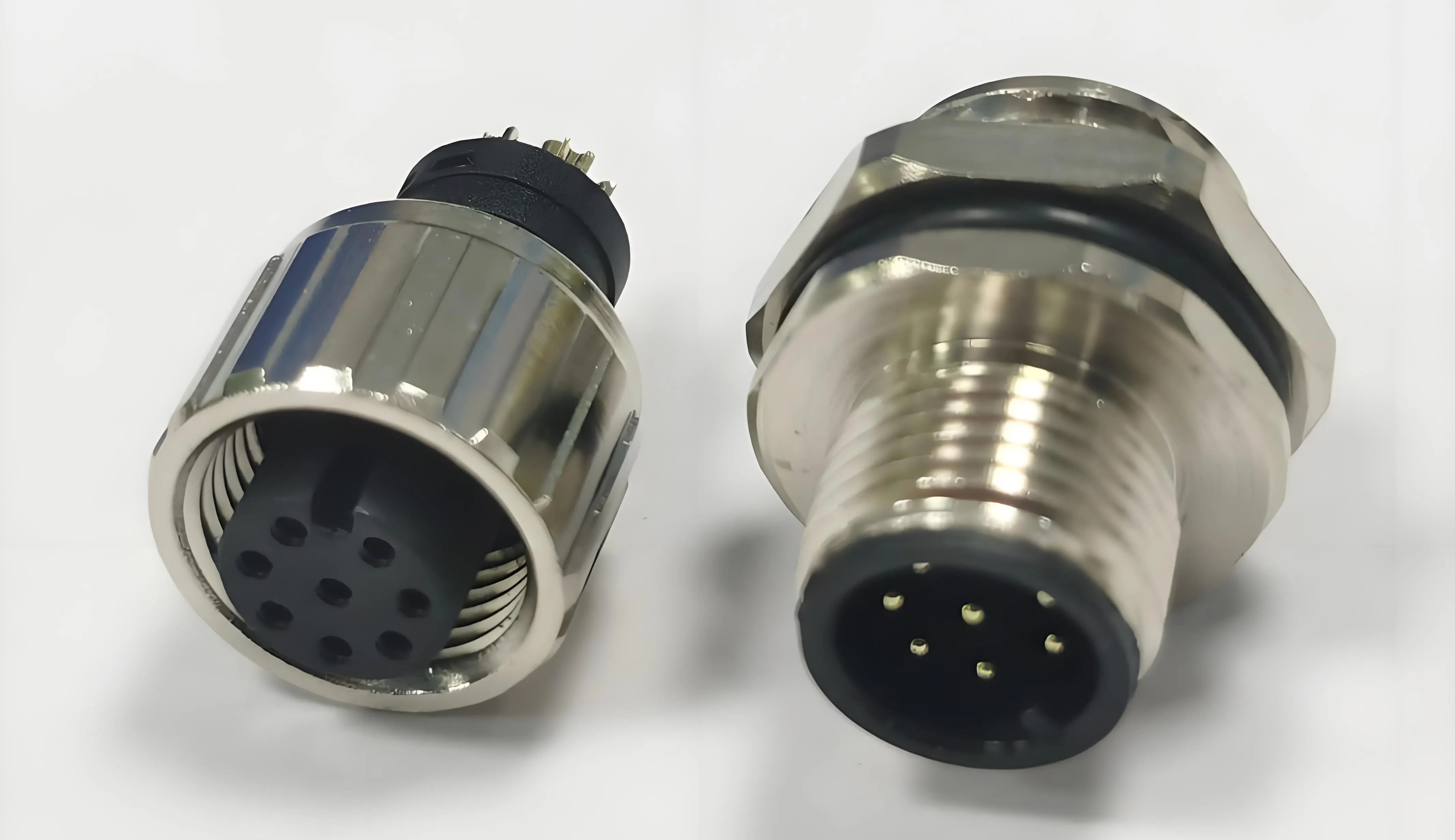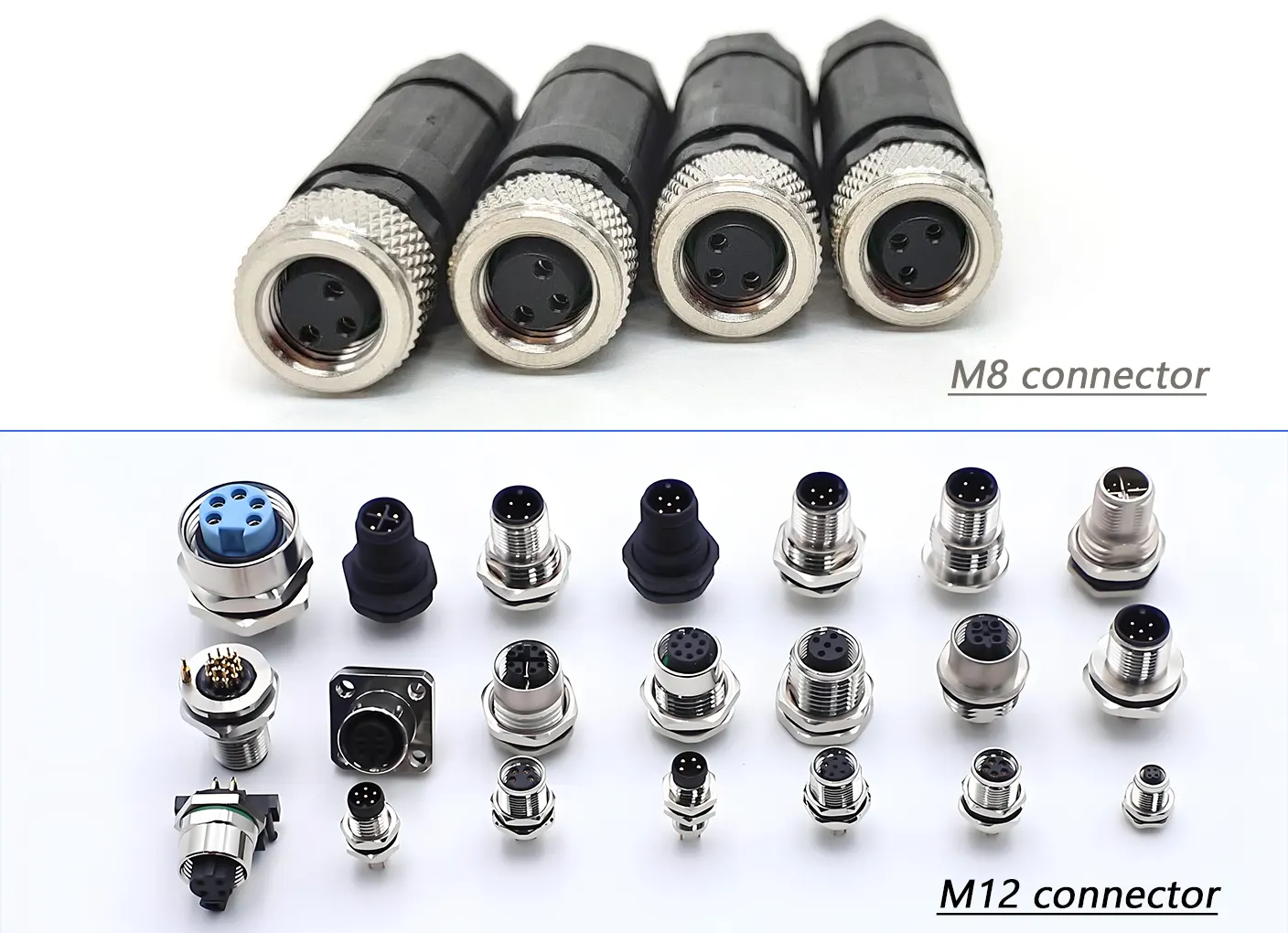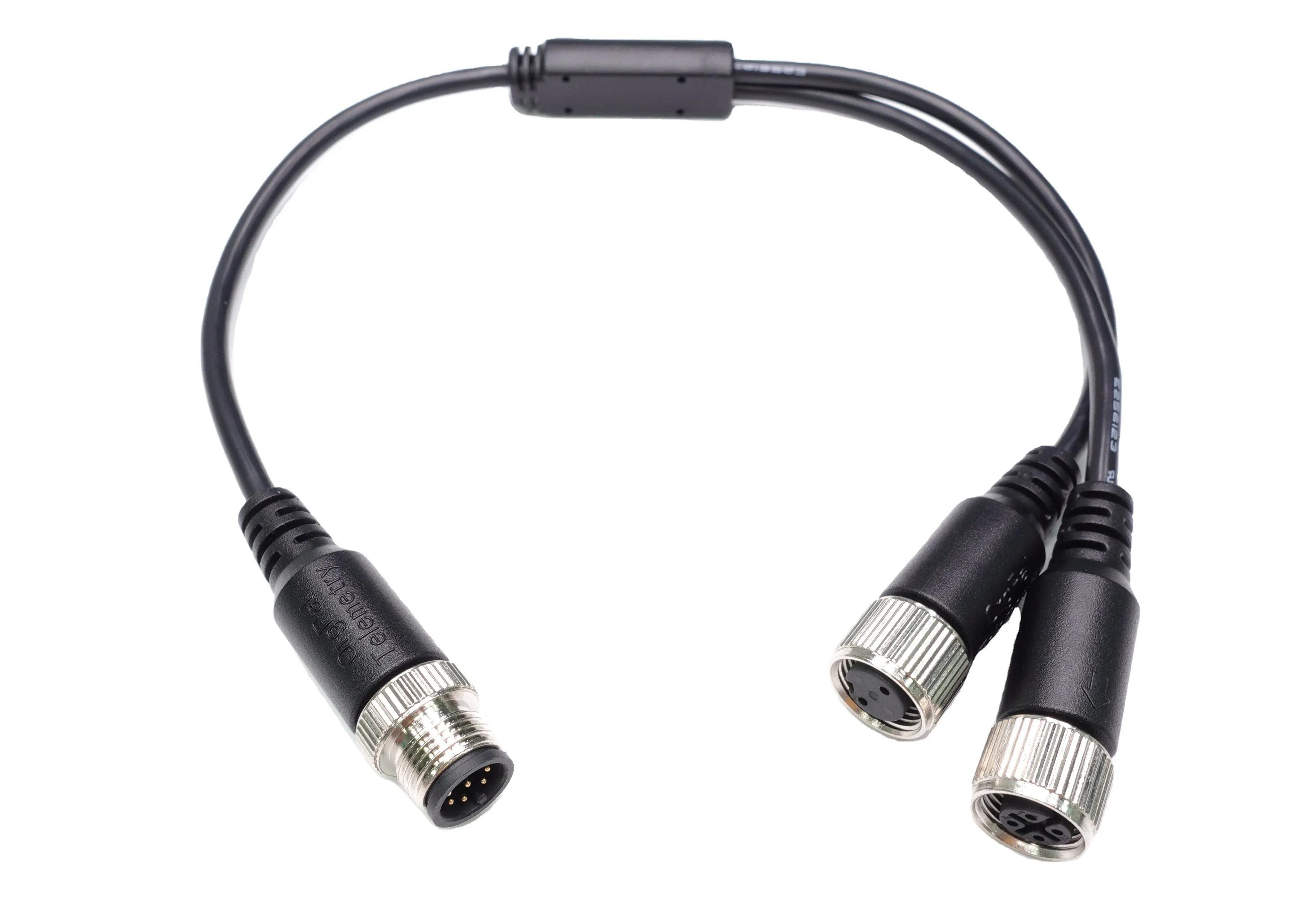
By quanyu lee
2025-09-12 11:30:00
M12 Connector Comprehensive Analysis: Performance, Applications and FAQs
In industrial automation, robotics, and smart manufacturing, the M12 connector has become a core component due to its stable performance, waterproof and dustproof structure, and reliable protection. It typically has an IP65, IP67, or even IP68 waterproof rating, ensuring stable operation in humid, outdoor, and even underwater environments, and reliable signal and power transmission in a variety of harsh working conditions. This article systematically introduces the definition of the M12 connector, its performance, M series comparisons, the role of the M12 cable connector, and common FAQs to help readers gain a deeper understanding of M12 applications and key selection criteria.
1. What is an M12 connector?
The M12 connector is a circular connector that complies with the IEC 61076 standard and has a 12 mm interface diameter. Due to its waterproof, dustproof, vibration-resistant, and durable features, it is widely used in industrial Ethernet, sensors, PLC control systems, and other fields. It is one of the most common connectors in industrial environments.

2. What are the performance characteristics of M12 connectors?
The M12 connector has become an industry standard interface due to its diverse performance. Its main features include:
- Protection: IP65, IP67, and even IP68 water and dust resistance ratings ensure stable connections even in high humidity, rain, and temporary submersion.
- Transmission: Supports power, signal, and high-speed data transmission, with some models meeting the requirements of industrial Ethernet and gigabit data.
- Interference Immunity: The metal shielded housing effectively reduces electromagnetic interference (EMI).
- Durability: Thousands of plug-in and unplugging cycles ensure long-term stable operation.
This high level of waterproofness and durability makes the M12 cable connector an ideal choice for harsh environments.
3. What are the differences between M8 and M12 connectors?
- Size: The M8 connector has an 8mm diameter, while the M12 is 12mm, making it more robust and durable.
- Load Capacity: The M12 can support higher voltages and currents.
- Application Differences: The M8 is commonly used in small sensors, while the M12 covers a wider range of industrial applications, such as robotics, factory automation, and industrial Ethernet.

4. What are the connectors in the M series?
Common connectors in the M series include:
- M5: Micro sensor interface;
- M8: Small sensors and actuators;
- M12: Core choice for industrial control, industrial Ethernet, and data transmission;
- M16/M23: Suitable for high-power and high-current applications.
Among them, the M12 connector is the most widely used and is the star product of the M series.
5. Are all M12 connectors the same?
Not exactly. M12 connectors differ based on their coding (e.g., A, B, C, D, X) and intended use (signal, power, data).
- A coding: sensors and power;
- B coding: fieldbus;
- D/X coding: industrial Ethernet and high-speed data transmission.
The different codings prevent mis-insertion of M12 cable connectors, improving safety.

6. What are the applications of M12 connectors?
M12 connectors have a wide range of applications. Thanks to their waterproof, dustproof, and vibration-resistant properties, they are suitable for the following industries:
- Industrial Automation: Reliable connections in sensors, PLCs, and robotic systems;
- Transportation: Outdoor signal and power systems in railways, subways, and other areas require waterproofing to ensure stability in rainy and snowy conditions.
- Industrial Ethernet: PROFINET and EtherCAT communication interfaces require high-speed, waterproof network transmission;
- Medical Equipment: In medical environments requiring cleaning and disinfection, waterproof M12 connectors ensure proper functioning of equipment.
- Energy and Power: Wind turbines and solar systems are often located outdoors, making the waterproof performance of M12 cable connectors particularly critical.
With its advantages of waterproof, dustproof, and anti-interference, the M12 connector has become the core interface for industrial and outdoor applications.
7. Functions of the M12 Cable Connector
The main functions of the M12 cable connector are:
- Enabling reliable device-to-device connectivity;
- Ensuring data transmission integrity and power supply stability;
- Providing industrial-grade protection against shock, water, and dust.
It is an indispensable core component in modern industrial environments.

8. FAQ: Frequently Asked Questions About M12 Connectors
Q1: Are M12 connectors suitable for outdoor use?
Yes, choose an M12 cable connector with an IP67 waterproof rating or higher.
Q2: Are M12 connectors and RJ45 interfaces interchangeable?
No, they are not directly interchangeable, but an M12-to-RJ45 adapter can be used to achieve an Industrial Ethernet connection.
Q3: How do I choose the appropriate M12 coding?
Depending on the application, A coding is suitable for sensors, while D/X coding is suitable for high-speed Ethernet.
Q4: Does the M12 application include high-speed data transmission?
Yes, especially X-coded M12 connectors, which support Gigabit Ethernet data transmission.
9. Summary
Due to its high protection rating, waterproof performance, anti-interference capabilities, and wide range of applications, the M12 connector has become a core interface for industrial automation and the Industrial Internet of Things. Whether in sensors and PLC control systems, or in the robotics, medical, and energy industries, M12 cable connectors play a vital role. With the accelerated development of industrial intelligence, the market demand for M12 connectors is expected to continue growing.



